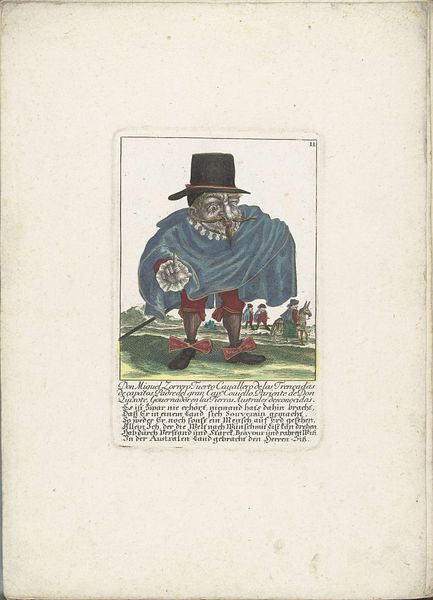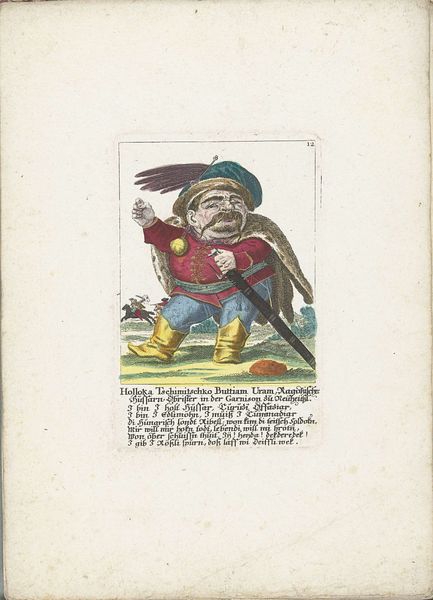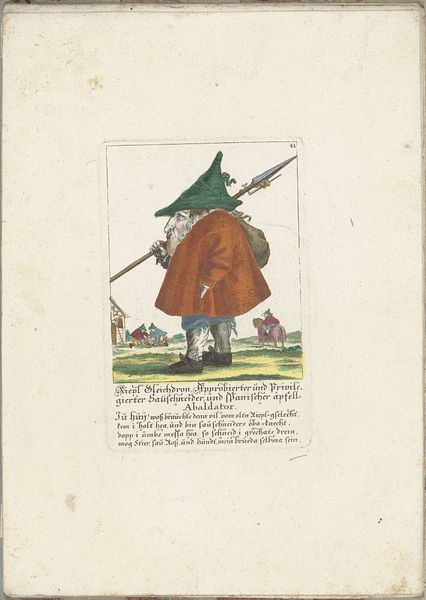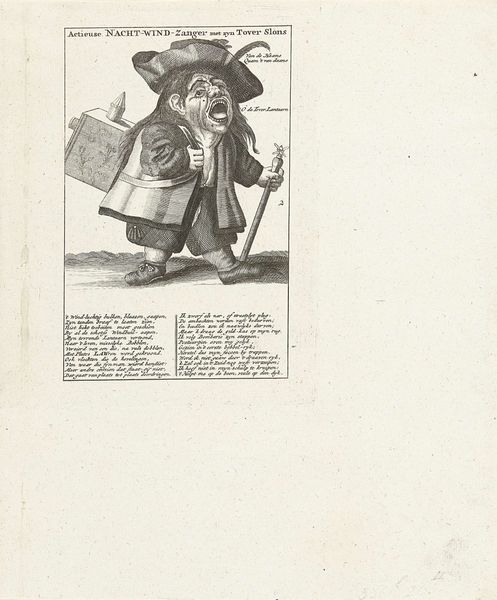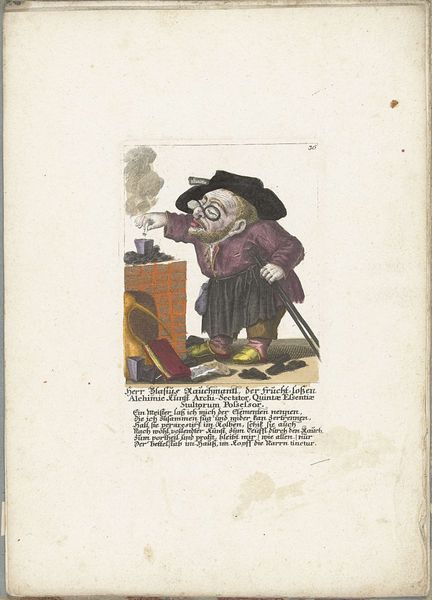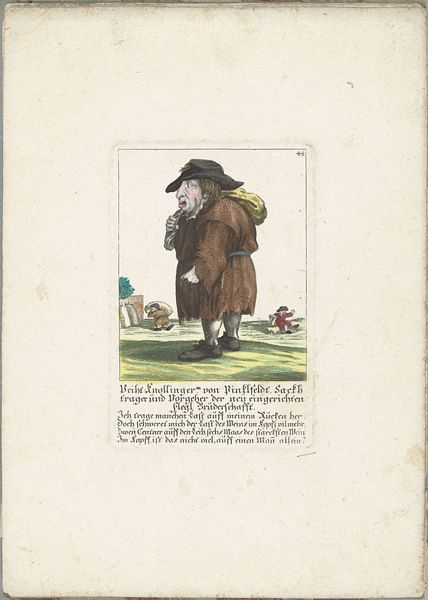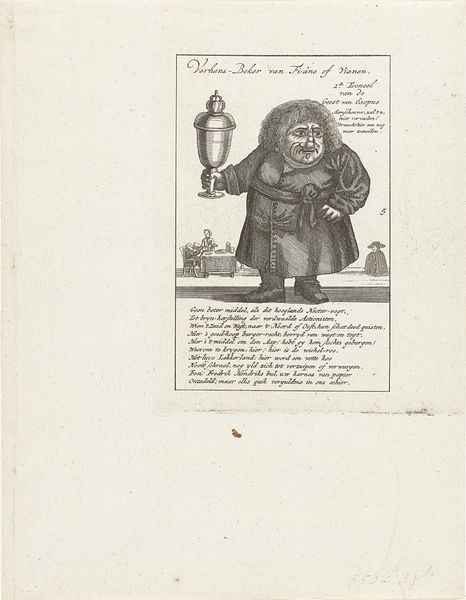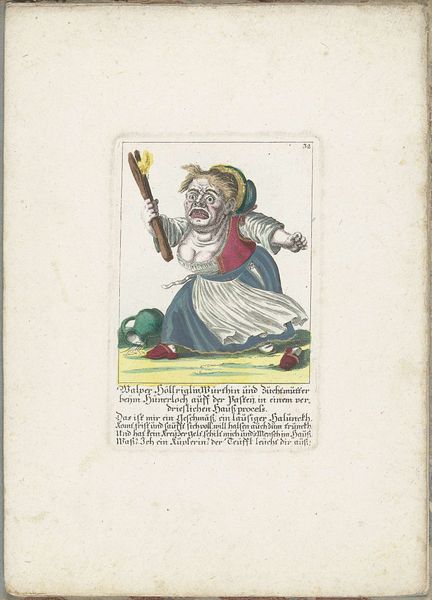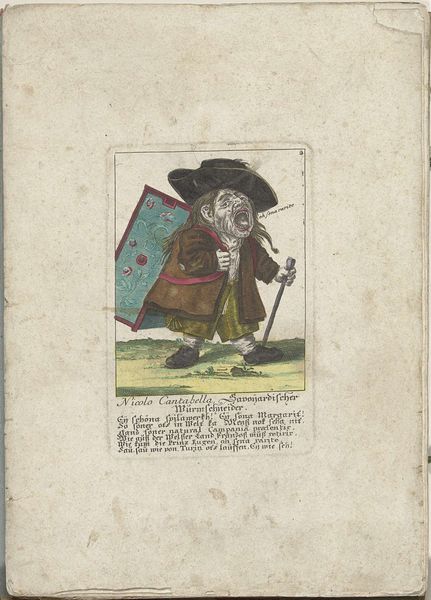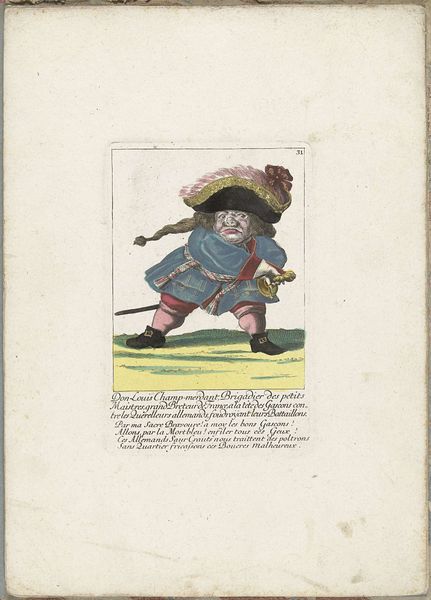
De dwerg Bartholdus Gursalkawiz als pelgrim uit Compostella, ca. 1710 1705 - 1715
0:00
0:00
drawing, paper, ink
#
portrait
#
drawing
#
baroque
#
caricature
#
paper
#
ink
#
genre-painting
#
watercolor
Dimensions: height 170 mm, width 110 mm, height 320 mm, width 225 mm
Copyright: Rijks Museum: Open Domain
Editor: Here we have Martin Engelbrecht's "De dwerg Bartholdus Gursalkawiz als pelgrim uit Compostella," dating from around 1710. It's a drawing in ink on paper, and I have to say, the depiction of this figure, supposedly a pilgrim, is rather… unflattering. How do you interpret this work? Curator: This drawing speaks volumes about the social attitudes towards disability and marginalization during the Baroque period. It uses caricature to otherize, presenting a figure of low stature adorned with pilgrim symbols—a visual contradiction that likely aimed to mock both religious devotion and physical difference. We must consider the power dynamics at play here. What does it say about societal perceptions of piety when linked to those deemed 'unworthy' due to physical appearance? Editor: So, you're saying it's more than just a funny drawing? Curator: Precisely. The humor is barbed. The figure's exaggerated features aren't merely whimsical; they likely reinforced harmful stereotypes about marginalized groups. It invites the viewer to laugh *at*, not *with*. This also begs a question, what kind of social hierarchy did the artist envision? How does that link with societal control? Editor: That's a perspective I hadn’t considered. The details, like the scallop shells—badges of pilgrimage—feel less about faith and more about ridicule in this context. It feels much darker when considering historical prejudices. Curator: Exactly. By unpacking the historical and social context, we can confront uncomfortable truths about past attitudes and their lingering effects on contemporary biases against differently abled people. Editor: This makes me reconsider what I thought I knew about Baroque portraiture, too. I appreciate understanding the context like that. Curator: Absolutely! By confronting the uncomfortable, we hopefully contribute to a more empathetic and equitable worldview today.
Comments
No comments
Be the first to comment and join the conversation on the ultimate creative platform.

